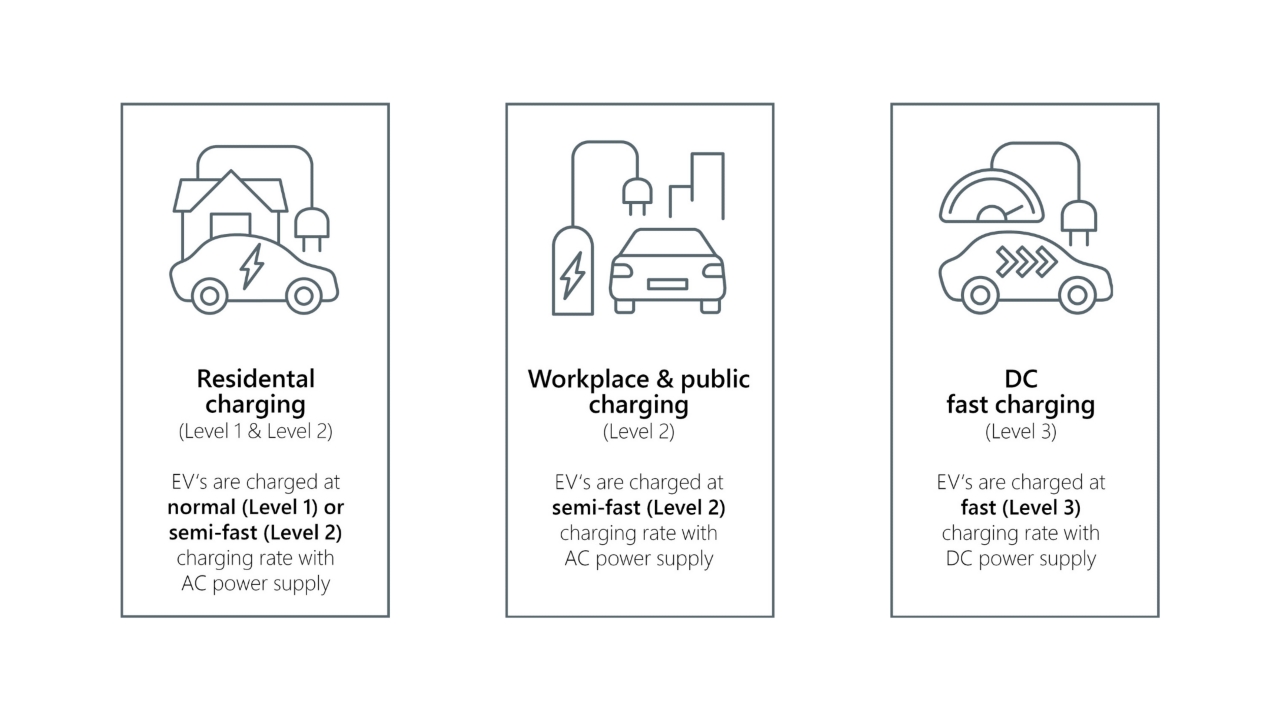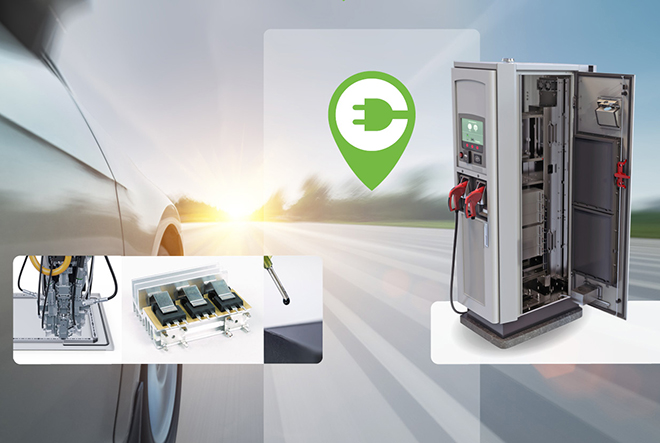Gearing Up for the EV Road Ahead: Reliable, Convenient Fast Charging Will Drive the Future of EV Adoption
For consumers in developed nations, lifestyle convenience is ingrained. We don’t know what it’s like not to have access to necessities – food, water, clothing, housing and transportation – not to mention luxuries. When it comes to dependency on automotive transportation that, too, is built on confidence around readily-available fuel. In urban areas, there’s a gas station on every corner. The societal transformation that has occurred because of automotive technology is stunning; and, now, the auto sector is set to enter a new era of e-mobility. While electric vehicles (EVs) have been available for decades, next-generation electronic innovation and rechargeable battery technology have moved the needle from EVs as a novelty mode of transport to a reliable combustion engine alternative.
With a healthy nearly 30% compound annual growth rate (CAGR) projected over the next decade, there could be over 30 million EVs on the road globally by the year 2030(1). Consumer sentiment around battery-operated EVs has witnessed a dramatic shift in recent years, and EV sales as a percentage of total car sales have continued to steadily climb. While this is a promising development toward meeting the goals of CO2 emission reduction, a looming roadblock remains: access to charging power.
How do we keep the momentum from stalling out?
The EV charging infrastructure, while markedly improved with the expansion of EV ownership, is a long way from parity with the availability and speed of a refuel at the pump. Opportunity charging via residential or commercial (workplace and public spaces) connection comprises the vast majority of battery charging events and is the most practical for numerous reasons. An overnight plug-in at home will fully charge most EV batteries and a top-off while at work or the grocery store can help keep enough power for around town movement. But a few hours’ AC charge will not suffice for long distances like vacation travel. For extended journeys, access to robust fast charging stations that can provide a charge in 30 minutes or less is required.

Without an expansive DC fast charging infrastructure to supplement residential and public/workplace access, the projected dramatic rise of EV sales through 2030 may sputter. Numerous factors will influence accelerated development of the global charging network – from public policy to funding initiatives to technology innovation. No matter the charging level device, however, consumers expect reliability and dependability – just like the gas pump. The systems have to work and building them to last will increase trust and encourage more widespread use. Imagine pulling into a charging port to find the connector gun broken or the entire unit out of service; too many experiences like this and the enthusiasm about EV ownership may wane. For our part, Henkel is working to ensure dependability within all types of EV charging devices to shape consumer confidence at the port, just like exists at the pump. Effectively dissipating heat – all the way up to the 400 – 1000 V of fast chargers – is a key piece of the reliability equation, as are protective potting solutions for securing critical wires and coils, and gasketing materials that prevent ingress of environmental contaminants into charging units.
DC fast chargers, which is arguably where expansion is required, system reliability is a must as these units are expected to last as long as 10 years in the field. They are costly to produce and, therefore, performance and durability are critical. Functionality of the device’s workhorse power module – now smaller in size with higher power densities than previous-generation designs – can be optimized by effectively dissipating operational heat; Henkel’s low thermal resistance phase change thermal interface materials are a proven solution and a superior alternative to grease, which can lose effectiveness over time. The importance of sound thermal control cannot be overstated, especially with systems that are managing such high power. Securing the unit’s interior structure to protect its electronics is made possible with UL-certified Sonderhoff Fermapor K31 formed-in-place foam gasketing (FIPFG) system, which allows high automation, fast deposition for complex shapes and changing designs. Units are protected from dust, moisture and other environmental contaminants while delivering fast shape recovery for confident serviceability. And, as drivers will attest, charging connectors take a beating with users plugging and unplugging quickly. High-performance, cost-effective potting materials fully encapsulate the cables and wires within the charging gun connectors to provide rugged durability in changing outdoor environments and manage the stress induced during user plug-ins.
While these are only a few examples of Henkel material solutions in the EV charging infrastructure ecosystem, they are integral to building long-lasting, functionally and electrically sound devices that will foster EV owner trust and drive needed additional investment.

buy lasuna – diarex buy online buy himcolin generic
besifloxacin online order – buy carbocysteine pills order sildamax without prescription
gabapentin 600mg brand – azulfidine drug buy sulfasalazine for sale
order benemid 500 mg generic – order monograph pills purchase carbamazepine sale
oral celecoxib 100mg – order indocin 50mg without prescription buy generic indomethacin
colospa 135mg cheap – cilostazol generic cilostazol 100 mg generic
purchase diclofenac for sale – buy aspirin 75mg online aspirin 75mg usa
order rumalaya without prescription – cheap shallaki generic amitriptyline online
buy pyridostigmine 60mg generic – buy imitrex 50mg pills order imuran 25mg without prescription
order diclofenac generic – cheap nimodipine online order nimotop generic
order ozobax online cheap – purchase baclofen pill purchase feldene online cheap
order mobic 7.5mg without prescription – buy generic ketorolac over the counter buy toradol without prescription
periactin tablet – cost tizanidine buy tizanidine cheap
cost trihexyphenidyl – purchase voltaren gel online cheap order voltaren gel online cheap
buy omnicef generic – buy generic clindamycin for sale
accutane cheap – cost deltasone buy deltasone generic
permethrin canada – acticin brand generic retin
cost betnovate 20 gm – brand betamethasone buy cheap generic benoquin
purchase flagyl pills – buy cheap cenforce buy generic cenforce 100mg
augmentin over the counter – augmentin online levoxyl brand
buy hyzaar without prescription – keflex 250mg over the counter buy keflex 250mg for sale
how to get eurax without a prescription – buy cheap generic bactroban ointment buy aczone without a prescription
buy modafinil 100mg generic – promethazine 25mg price purchase meloset generic
zyban 150 mg cost – order zyban 150mg generic buy shuddha guggulu online
cost capecitabine 500mg – capecitabine for sale online purchase danocrine pills
progesterone 200mg ca – buy prometrium for sale fertomid cost
cost fosamax – cost tamoxifen 10mg buy medroxyprogesterone 10mg online
aygestin over the counter – order yasmin pills yasmin pill
purchase estradiol generic – arimidex ca buy anastrozole 1mg generic
гѓ—гѓ¬гѓ‰гѓ‹гѓійЂљиІ©гЃ§иІ·гЃ€гЃѕгЃ™гЃ‹ – г‚ёг‚№гѓгѓћгѓѓг‚ЇгЃ®иіје…Ґ г‚ўг‚ёг‚№гѓгѓћг‚¤г‚·гѓійЂљиІ© 安全
eriacta worthy – sildigra surprise forzest lap
valif online nose – buy sustiva 10mg sinemet us
crixivan pills – buy cheap generic crixivan how to buy emulgel
valif pills clang – secnidazole online buy buy sinemet 20mg pills
buy modafinil medication – purchase provigil generic combivir generic
promethazine drug – buy phenergan pills purchase lincocin pill
ivermectin 6mg tablet – order atacand 8mg pill tegretol buy online
deltasone 10mg cheap – purchase capoten online buy cheap generic captopril
deltasone online – deltasone order buy captopril medication
amoxicillin without prescription – order valsartan generic oral combivent 100mcg
generic gabapentin 800mg – buy generic itraconazole 100 mg sporanox 100 mg pill
order lasix 100mg generic – nootropil 800mg us buy betnovate 20gm
oral vibra-tabs – where can i buy doxycycline glipizide online
order amoxiclav pills – augmentin cost buy cymbalta without a prescription